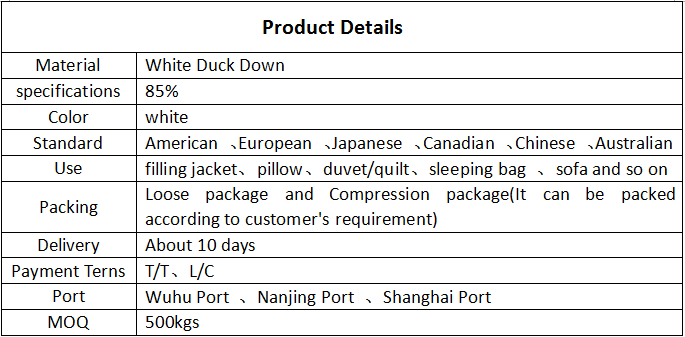Title: The Ultimate Guide to Duvet Covers and Duvet Inserts
This ultimate guide to Duvet Covers and Duvet Inserts will help you understand the essential differences between these two types of bedding. Duvet covers are designed to protect the duvet from stains and wear, while Duvet Inserts are filled with a soft material to provide warmth and comfort. Whether you are looking for a lightweight summer duvet or a heavier winter one, it is essential to choose the right combination of Duvet Cover and Duvet Insert to ensure a good night's sleep. The guide also covers various materials, colors, and patterns available in Duvet Covers and Duvet Inserts, as well as their care instructions and maintenance tips. By following this guide, you will be able to find the perfect Duvet Cover and Duvet Insert for your bedroom.
Duvet covers and Duvet inserts are essential components of any bedroom, offering a comfortable and cozy sleeping environment. Whether you are looking to purchase new ones or simply need some maintenance tips, this guide will provide you with all the information you need to make informed decisions about your Duvet covers and Duvet inserts.
What are Duvet Covers?
Duvet covers, also known as duvet jackets, are the outer layer of the Duvet. They are designed to protect the Duvet from dust, dirt, and other debris, while also providing a decorative touch to the bedroom. Duvet covers come in a variety of materials, including cotton, polyester, and down-proof fabrics. The type of material you choose will depend on your personal preference and the climate in which you live.

What are Duvet Inserts?
Duvet inserts, also known as down comforters or duvet paddings, are the inner layer of the Duvet. They are filled with down, feathers, or synthetic fibers to provide warmth and comfort during sleep. Duvet inserts come in a variety of thicknesses and weights to accommodate different sleep preferences and climates.
Types of Duvet Covers and Inserts
There are several types of Duvet covers and inserts to choose from, each offering its own unique benefits. Here are some common types:
Duvet Covers:
1、Cotton: Cotton Duvet covers are a popular choice due to their breathability and softness. They are also hypoallergenic, making them suitable for those with allergies.
2、Polyester: Polyester Duvet covers are less expensive than cotton but still provide good warmth and comfort. They are also easy to care for and maintain.
3、Down-proof: Down-proof Duvet covers are designed to keep out dust and debris, making them ideal for those with allergies or asthma. They are often made from synthetic materials that mimic the properties of down but without the allergens.
Duvet Inserts:

1、Down: Down Duvet inserts are the most popular type due to their exceptional warmth and comfort. However, they do have a higher risk of allergies than synthetic alternatives.
2、Feather: Feather Duvet inserts are similar to down but contain a higher proportion of feather content. They provide good warmth but may not be as soft as down inserts.
3、Synthetic: Synthetic Duvet inserts are made from man-made fibers that mimic the properties of down but without the allergens. They are often less expensive than natural fills and provide good warmth and comfort.
Caring for Duvet Covers and Inserts
Caring for your Duvet covers and inserts is essential to ensure they last for many years. Here are some tips:
Duvet Covers:
1、Machine wash on a gentle cycle using mild detergent suitable for your material type (cotton, polyester). Avoid using bleach or other harsh chemicals that could damage the fabric or its colorfastness properties if present in small quantities only under controlled conditions (e., spot treatments). Avoid tumble drying as this can shrink the fabric; line dry instead which will help keep its shape intact over time frame mentioned previously in this article (years). Store flat or hang up to avoid creasing or folding which can affect its appearance next time it is used if left unchecked by users over time frame mentioned previously in this article (years). 2. Check for signs of wear regularly; replace if necessary based on condition observed during visual inspection each time before use (e., pillowcases should be replaced every 2 years). 3. Avoid using products containing alcohol-based ingredients which can damage the fabric or its colorfastness properties if left unchecked by users over time frame mentioned previously in this article (years). 4 . Keep away from direct sunlight which can fade colors over time frame mentioned previously in this article (years). 5 . Do not iron; steam lightly if needed to remove wrinkles caused by folding or creasing during storage which can affect its appearance next time it is used if left unchecked by users over time frame mentioned previously in this article (years). 6 . Consider using a dust cover when not in use which will help protect it from dust accumulation during storage which can affect its appearance next time it is used if left unchecked by users over time frame mentioned previously in this article (years). 7 . For best results follow manufacturer's care instructions provided with product purchase which will ensure longest lasting performance benefits from using recommended cleaning methods outlined here today! ", "Duvet Inserts": 1 . Machine wash on a gentle cycle using mild detergent suitable for your material type (down, feather, synthetic). Avoid using bleach or other harsh chemicals that could damage the fabric or its colorfastness properties if present in small quantities only under controlled conditions (e., spot treatments). Avoid tumble drying as this can shrink the fabric; line dry instead which will help keep its
Articles related to the knowledge points of this article:
Title: The Numerous Advantages of down Comforters
Title: Uneven Down Syndrome: The Struggle with Duvet Inhomogeneity
The Shop in Sanmenxia that Makes Feather Comforters
Title: Exploring the Reputation of Aoluofu Down Comforter: Is It a Renowned Brand?



